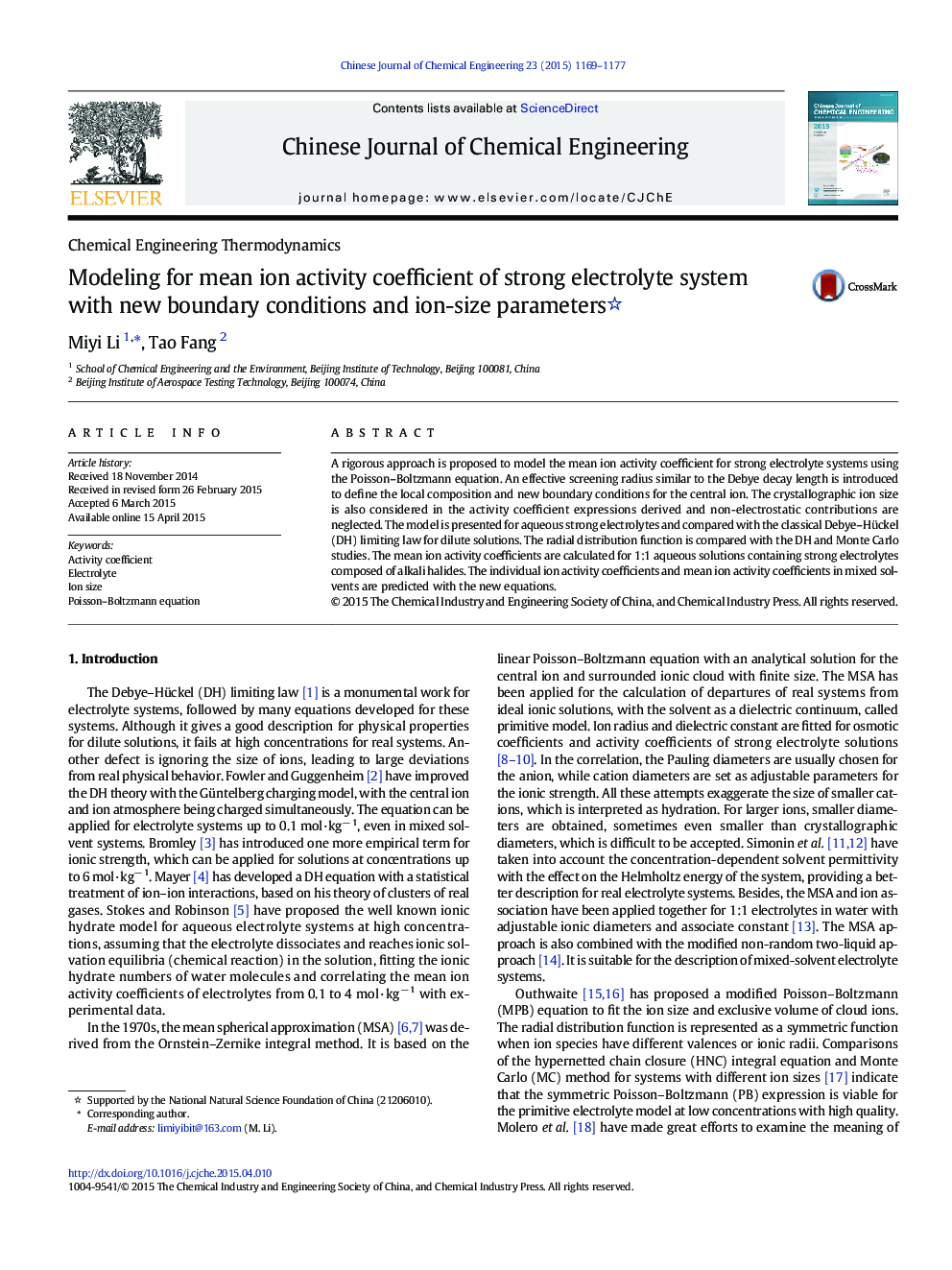| کد مقاله | کد نشریه | سال انتشار | مقاله انگلیسی | نسخه تمام متن |
|---|---|---|---|---|
| 167104 | 1423398 | 2015 | 9 صفحه PDF | دانلود رایگان |
A rigorous approach is proposed to model the mean ion activity coefficient for strong electrolyte systems using the Poisson–Boltzmann equation. An effective screening radius similar to the Debye decay length is introduced to define the local composition and new boundary conditions for the central ion. The crystallographic ion size is also considered in the activity coefficient expressions derived and non-electrostatic contributions are neglected. The model is presented for aqueous strong electrolytes and compared with the classical Debye–Hückel (DH) limiting law for dilute solutions. The radial distribution function is compared with the DH and Monte Carlo studies. The mean ion activity coefficients are calculated for 1:1 aqueous solutions containing strong electrolytes composed of alkali halides. The individual ion activity coefficients and mean ion activity coefficients in mixed solvents are predicted with the new equations.
A rigorous approach is proposed to model the mean ion activity coefficient for strong electrolyte systems using the Poisson–Boltzmann equation. An effective screening radius similar to the Debye decay length is introduced to define the local composition and new boundary conditions for the central ion. The crystallographic ion size is also considered in the activity coefficient expressions derived and non-electrostatic contributions are neglected. The radial distribution function is compared with the DH and Monte Carlo studies. The mean ion activity coefficients are calculated for aqueous and mixed solvent electrolyte systems composed of alkali halides.Figure optionsDownload as PowerPoint slide
Journal: Chinese Journal of Chemical Engineering - Volume 23, Issue 7, July 2015, Pages 1169–1177
